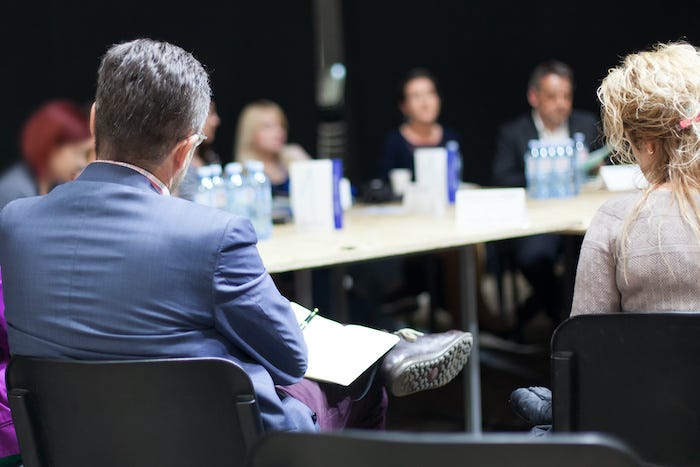Coronavirus Impact on Technical Standards Bigger than Initially Reported
Virtual face-to-face meetings prove to be a poor substitute for decision-making activities within global standards organizations.
April 10, 2020

Recent news has highlighted the potential slowdown in the rollout of 5G technologies resulting from a slower decision-making process caused by the coronavirus pandemic. Specifically, the 3GPP standard organization, which governs the technical specification for 5G technology, has suspended work on key portions of the standard. The cause of the delay was the ceasing of all face-to-face meetings for at least three months due to the global spreading of the coronavirus.
But other standard organizations are facing similar issues that will also result in the delay of technical products and systems. What follows are a sampling of three such organizations that have working relationships with the 3GPP and have been similarly affected by the coronavirus crisis. After a brief consideration of the current face-to-face meeting status for each of these standard’s bodies, a list of common challenges will highlight the way that the coronavirus pandemic will delay both the standards and the introduction of products related to those standards.
First, here’s a sampling of coronavirus impacted standard’s organization with liaisons with the 3GPP:
IETF: The Internet Engineering Task Force is an open standards organization, which develops and promotes voluntary Internet standards. They are mainly focused on the Internet protocol suites. Much of the work in the IETF is done through mailing lists and online meetings. But the face-to-face meetings are where most of the key decisions are made. I’ll explain “why” shortly.
Status: The most recent IETF’s meeting, scheduled for March 2020 in Vancourver, V.C., was cancelled. A virtual face-to-face meeting for the steering group was developed, according to the website: “The Internet Engineering Steering Group (IESG) has developed an alternative all-virtual agenda for the week of March 21-27 with a limited schedule adapted to accommodate the time zones of as many participants as possible. The IETF Hackathon has also been cancelled.”
BBF: The Broadband Forum is an open standards organization in the communication space focused on accelerating broadband technologies, standards, and ecosystem development.
Status: The BBF’s last face-to-face “PON” standard’s meeting was held in early March 2020, prior to the COVID-19 outbreak and subsequent shutdowns. The forum changed its 2nd quarter face-to-face meeting to a virtual one due to the virus. “The Board of Directors met last week to discuss the Q2 face-to-face quarterly meeting that is scheduled for June 16-19 in Melbourne, Australia. In light of the current global situation we have decided to switch the Q2 meeting to a series of virtual meetings.”
ITU: International Telecommunication Union is a specialized agency of the United Nations that is responsible for issues related to information and communication technologies. The ITU sets international telecommunications standards.
Status: “As of Monday, 16 March 2020, all international meetings at ITU premises will be remote only until further notice and until 17 April 2020 at the earliest. Further information and guidelines on how to participate remotely can be found on the relevant meeting website. For ITU remote meeting participation tools, including Interprefy, please go here.
|
Image Source: Adobe Stock |
Here are the main challenges faced by each of these – and most other – organizations the create and maintain global standards:
Challenge 1: Coming to a Consensus
It’s easier to work out difference real-time and come to a consensus when all of the stakeholders are present at the same time and in the same location. This is especially true when the stakeholders are normally spread across many different global time zones. Not surprisingly, it is almost impossible to get everyone together for a virtual face-to-face meeting when attendees come from all over the globe, e.g., from India, China, the U.S. (both west and east coasts) and Europe. A convenient meeting time in one country will be a very inconvenient (e.g., 3 am in the morning) time in another country. Multiple time zones from across the global present a real problem.
Challenge 2: In-Person vs. Virtual
Virtual face-to-face meetings are not the same as in-person meetings. Typically, in-person face-to-face meetings for members of a standard’s group last from 3 to 5 days. Sponsoring companies send their members to the location where the meeting takes place. The members are committed for a full eight hours for each day. An enormous amount of work and consensus usually results from such meetings.
Conversely, there is no such time commitment for virtual face-to-face meetings. Members will typically spend only 2 to 3 hours each day for online, virtual standard meetings. The remainder of their time is spend doing their regular office work. This leads to a spreading out of the virtual meetings over a two-week time period so that it roughly equates to the same total amount of time spent in the in-person meeting.
Challenge 3: Time Spreading
The spreading out of meeting time with virtual face-to-face events may cause problems with related standard activities. For example, many members working on one stand, say for the IETF, are also members on BBF standards. As the time commitment for one activity spreads out, it might well interfere with the work on another standard that has also had to spread-out. As different but related standards bodies go virtual and have to extend their meetings over several weeks, they start to compete against each other’s time slots for the same members.
Worse yet, the availability of the key contributors may be significantly decreased. The end result is that reaching consensus will take much longer.
Challenge 4: Demonstration of Technology
An important part of any hardware and software standards activity is the demonstration, testing and verification of critical portions of the specification. Examples of such demonstration activities include the IETF Hackathon and the BBF Interoperability Plug Fest, among many others. Without ways to test the security of software or to physically test interoperability between hardware, engineers and product vendors won’t be sure if the new or updated standard specifications will actually work.
Challenge 5: Corporate Budget Cycles and Travel Restrictions
Most companies are facing significant decreases in revenue. As a result, most have made cutbacks in all spending areas including travel. But that’s only half of the problem. Most companies also run on quarterly budgets, which means if travel has been banned for the second quarter of 2020 (Apr – Jun), there will be no travel for the next three months. Only when profits return to a reasonable level will most companies relax the travel budgets. In other words, travel to standard’s meetings or anywhere else won’t return anytime soon.
|
Image Source: Adobe Stock |
RELATED ARTICLES:
John Blyler is a Design News senior editor, covering the electronics and advanced manufacturing spaces. With a BS in Engineering Physics and an MS in Electrical Engineering, he has years of hardware-software-network systems experience as an editor and engineer within the advanced manufacturing, IoT and semiconductor industries. John has co-authored books related to system engineering and electronics for IEEE, Wiley, and Elsevier.
About the Author(s)
You May Also Like





.jpg?width=300&auto=webp&quality=80&disable=upscale)

